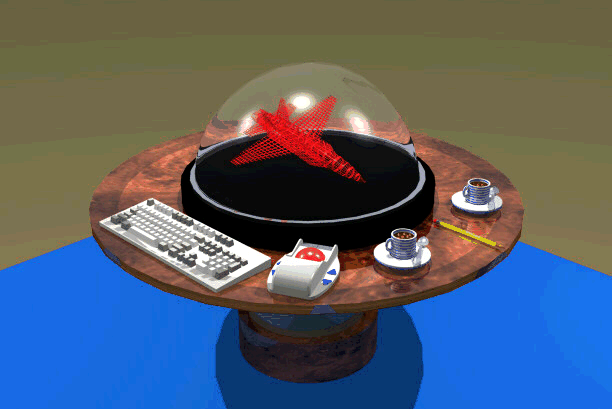
SVIT's undoubtedly will be used extensively in future years, as
they can represent a constantly-changing 3-D space much more
accurately and efficiently than some other 3-D imaging techniques.
One way in which SVIT's will be invaluable in future years is in air
traffic control, where they will be able to replace radar. Currently,
radar devices display a 3-D space on a 2-D screen. The third
dimension, flight altitude, is missing in these displays. The
altitude of airplanes must then be indicated alphanumerically by
figures on the screen. Because of the dimensional shortcomings of
radar devices, a controller has to constantly observe all of the
figures on the radar screen in order to keep track of the actual air
space situation. With SVIT's, the air space can accurately be
represented as a 3-dimensional space. Air traffic controllers will
then be able to judge the activities of the airplanes more
effectively than they currently can with radar devices.

SVIT's also have future implications for the world of
telecommunications. The Star Wars trilogy has already demonstrated
the way in which volumetric imaging can be used to send messages, as
in the clip shown below. (Only the first part of the clip is
relavent, please ignore any small pink rabbit references. Thank
you.)
LINKLINKLINK TO PEPSI CLIP
Finally, the world of entertainment may one day be able to use
advanced SVIT's to create three-dimensional television shows without
the use of 3-D glasses. Many commercial companies, such as
Actuality Systems and
Neos Technologies are currently
working on simplifying and improving SVIT's, as are major research
institutions around the world. With their ongoing research and
development, SVIT's will become ever simpler and more exact in years
to come. Maybe one day they will be even as common as
flip books.
|
| ||
BACK |
|
NEXT |